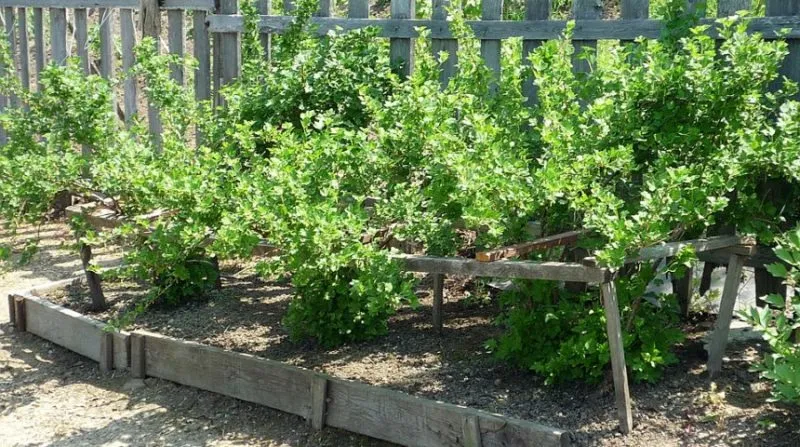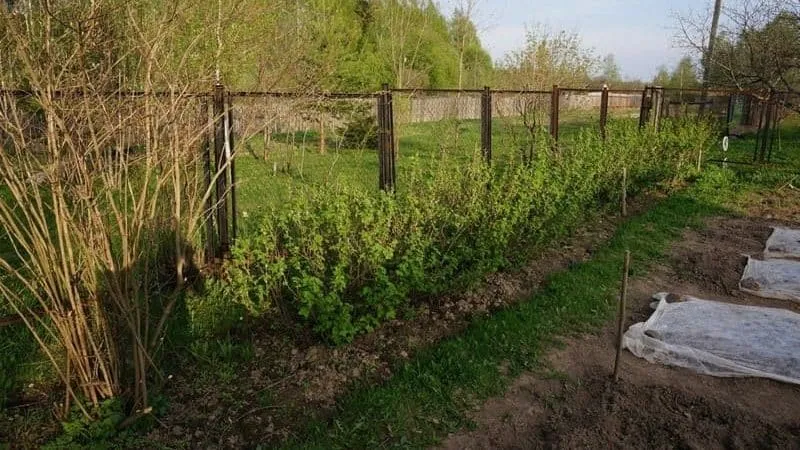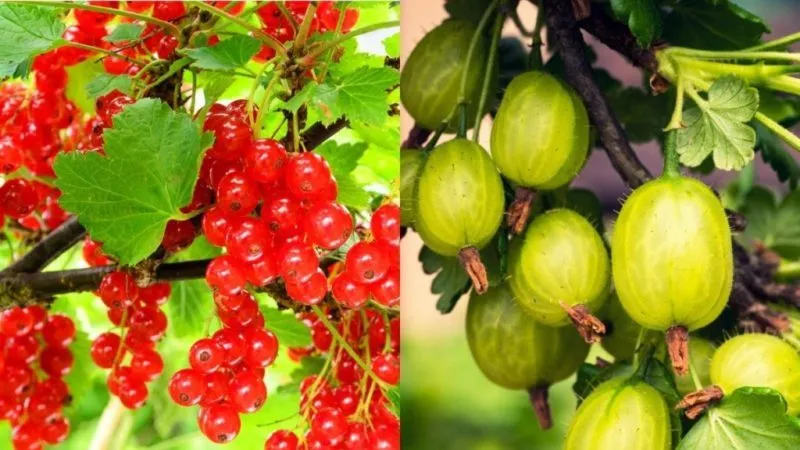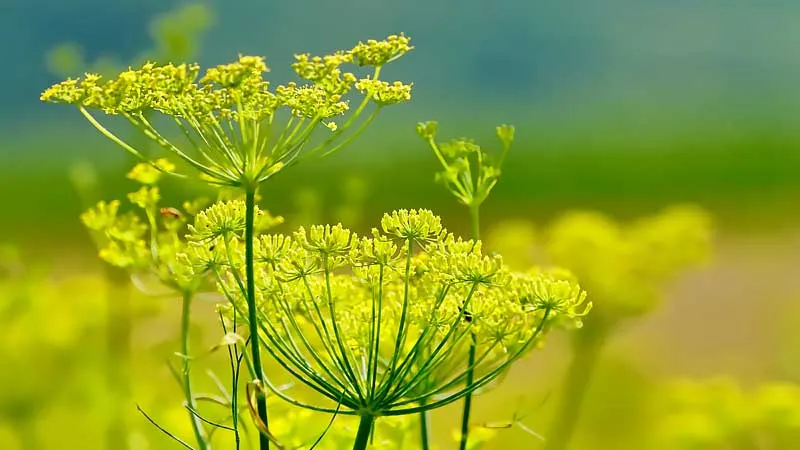Gooseberry bushes can be planted in a permanent spot either in spring or autumn. Before planting, trim the shoot tips and remove any dried roots. If you choose the right location and follow simple care rules, the shrub can bear fruit for 15 years or more. Learn where to plant gooseberries and how to select good companion plants in this article.
Table of contents
Where to Plant Gooseberries in Your Garden
Before purchasing seedlings, you should select a suitable planting site, considering soil requirements, sunlight, and moisture levels.
In Shade or Sun

This is a sun-loving plant, and if placed in the shade, it will produce fewer and smaller berries.
In Central and Northern Europe, choose the sunniest spots in your garden for gooseberry bushes. In Southern Europe, where intense sunlight can scorch leaves and berries, partial shade is preferable.
Note! A convenient spot for the shrub is between fruit trees, keeping a distance of at least 2 m.
Moisture Requirements
Excess moisture is harmful to gooseberries — the root collar can rot quickly, leading to the plant’s death.
Experts do not recommend planting bushes in waterlogged areas or where groundwater is high (closer than 1.5 m to the surface).
Tip! If groundwater is 0.8-1 m deep and no other location is available, you can plant the shrub on a raised mound of soil, about 0.3-0.5 m high and 1 m wide.
Wind Protection
Gooseberry plantings should be shielded from prevailing winds by trees or buildings. In summer, this reduces the drying effect of wind. In winter, more snow will accumulate, protecting the soil from deep freezing and ensuring sufficient moisture in spring.
Soil Requirements

The best yields are achieved on loamy, sandy loam, or sandy soils.
Gooseberries are sensitive to soil acidity, preferring a slightly acidic pH of 6.0-6.5.
Before planting, apply the following fertilizers per 1 m²:
- Organic matter — 2 to 4 kg;
- Ammonium nitrate — 20-25 g;
- Superphosphate — 30-50 g;
- Potassium chloride — 20-25 g.
Ideal Predecessor Plants
Good predecessors for gooseberries include beets, potatoes, and legumes.
Peas, beans, and alfalfa enrich the soil with nitrogen, reducing the need for additional fertilizers. After beets and potatoes, the soil contains fewer pests that affect berry crops.
These vegetables and herbs should be grown in the designated area for at least two consecutive years before planting gooseberries.
Companion Plants for Gooseberries

Most gardens have limited space, so it’s important to consider plant interactions when planning your layout.
Follow these rules when selecting companion plants:
- Plants should have different nutrient requirements.
- Choose neighbors with different pests and diseases to minimize cross-contamination.
- Root systems should occupy different soil depths to avoid competition for water.
- Companion plants should not release harmful substances that affect each other.
Beneficial Companions
Gooseberries thrive alongside red currants. These shrubs do not compete for nutrients and, due to different pests and diseases, do not infect each other. Their similar care requirements make maintenance easier.
Another excellent neighbor is cherry. Its root system grows much deeper than that of gooseberries, ensuring both plants receive sufficient water and nutrients. Cherry trees also have a relatively open canopy, preventing excessive shading.
Aromatic herbs like sage, lemon balm, mint, and basil planted nearby help repel pests.
Neutral Neighbors
Gooseberries can grow without issues near apple, plum, and pear trees.
If planting near young trees, ensure a minimum distance of 2 m between trunks to prevent shading as the trees mature.
Poor Companions
Raspberries and black currants negatively affect gooseberry growth and yield, as their roots aggressively absorb water and nutrients. Shared pests and diseases also pose a risk. For the same reasons, avoid planting strawberries and grapes nearby.
Warning! Herbs like hyssop and fennel release substances harmful to shrub roots. Never plant them near gooseberries.

Conclusion
Where is the best place to plant gooseberries? This hardy shrub’s productivity and health largely depend on location. Choose sunny, wind-protected spots with well-drained soil.
Pay attention to companion planting. Good neighbors for gooseberries include red currants, cherries, honeysuckle, and aromatic herbs (mint, basil, sage). Avoid planting black currants, raspberries, or strawberries nearby. Select the right spot for your berry bushes, and enjoy a bountiful harvest.







